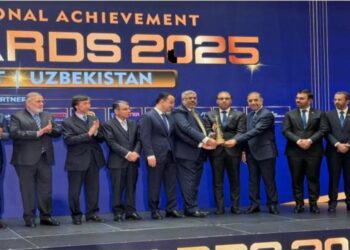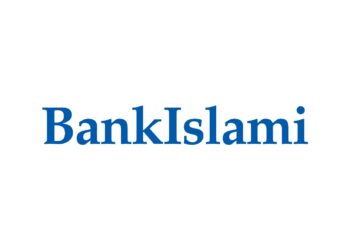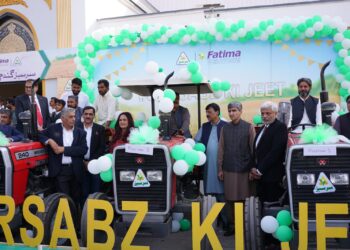Islamabad – In a significant development for Pakistan’s energy and water infrastructure, the Tarbela Dam Fifth Expansion Project is progressing steadily and is expected to begin electricity generation by next year. Federal Minister for Water Resources, Moin Ahmed Wattoo, announced during a media briefing that the project would be fully completed by 2026, contributing an additional 1530 megawatts (MW) of power to the national grid.
This initiative is part of the broader efforts to meet Pakistan’s growing electricity demands through low-cost, renewable hydropower sources, while simultaneously addressing load shedding and water scarcity issues across the country.
Overview of the Tarbela Fifth Expansion Project
The Tarbela Dam, located on the Indus River in the Haripur District of Khyber Pakhtunkhwa, is one of the largest earth-filled dams in the world and a cornerstone of Pakistan’s power generation and irrigation systems. Originally completed in 1976, the dam has undergone multiple expansions to enhance its energy output and water storage capacity.
The Fifth Expansion Project is being constructed on Tunnel No. 5, which was previously unused for power generation purposes. This tunnel is now being equipped with three generating units, each with a capacity of 510 MW, bringing the total added capacity to 1530 MW.
Once operational, the project is expected to supply an average of 1.347 billion units (kWh) of low-cost hydroelectric power annually, significantly reducing Pakistan’s reliance on imported fossil fuels.
Strategic Funding and International Collaboration
The Tarbela Fifth Expansion is being supported through international financial assistance from two major institutions:
- The World Bank has committed $390 million
- The Asian Infrastructure Investment Bank (AIIB) is contributing $300 million
This collaborative funding model highlights global confidence in Pakistan’s commitment to clean energy development and sustainable water management. The funds are being used not only for the construction of power-generating units but also for supporting infrastructure, such as access roads, power evacuation lines, and monitoring systems.
Federal Minister’s Visit and Media Briefing
During a recent visit to the construction site, Federal Minister Moin Ahmed Wattoo, accompanied by WAPDA Chairman Naveed Asghar Chaudhry and other senior officials, expressed optimism regarding the progress of the project.
Speaking to the media, Minister Wattoo stated:
“The Tarbela Fifth Expansion Project is on track and will be generating power by 2026. This will not only add affordable electricity to the national grid but will also help in reducing load shedding and improving overall energy security in the country.”
He also emphasized the government’s focus on investing in renewable and indigenous energy sources to reduce the burden of expensive energy imports and cut down electricity tariffs for consumers.
Importance of the Tarbela Dam in Pakistan’s Power Sector
The Tarbela Dam currently contributes over 4800 MW of electricity to the national grid from its existing units. With the addition of the Fifth Expansion, this figure will exceed 6300 MW, making it a critical asset for Pakistan’s energy needs.
Hydropower is the cheapest and cleanest form of electricity, and Pakistan has enormous untapped potential in this sector. According to various estimates, the country has a hydropower potential of over 60,000 MW, but currently utilizes only a fraction of it.
Benefits of the Fifth Expansion Project
✅ Enhanced Power Generation
The new units will generate an average of 1.347 billion kilowatt-hours annually, which is enough to power millions of homes and businesses. This added supply will help reduce the electricity shortfall that plagues the country, especially during peak summer months.
✅ Cost-Effective Energy
Hydropower from Tarbela is significantly cheaper than thermal energy generated through imported oil and gas. Even though WAPDA officials indicated that the per-unit cost of electricity from TS-5 might be slightly higher than previous units due to currency fluctuations, it will still remain substantially cheaper than energy from non-renewable sources.
✅ Decreased Load Shedding
With the addition of 1530 MW of electricity, Pakistan is expected to see a notable reduction in load shedding, particularly in rural and underserved areas. This will improve industrial productivity and reduce hardships for citizens.
✅ Environmental Sustainability
Unlike fossil fuel power plants, hydropower does not emit greenhouse gases or pollutants. By expanding Tarbela, Pakistan is taking a vital step toward achieving its climate goals under the Paris Agreement.
Challenges and Considerations
While the project is progressing well, it faces several challenges, including:
- Exchange rate volatility, which affects the cost of imported equipment and machinery.
- Seasonal river flow fluctuations, which impact construction timelines and future energy output.
- Environmental and social impact management, particularly regarding the relocation and rehabilitation of communities near the construction area.
However, WAPDA and project contractors are actively addressing these issues with the help of international consultants and stakeholders.
Statement by WAPDA Chairman Naveed Asghar Chaudhry
During the site visit, WAPDA Chairman Naveed Asghar Chaudhry highlighted the technical complexities and successes of the project:
“We are pleased with the current pace of development. This project is a critical component of WAPDA’s strategy to maximize the output of existing infrastructure through modern upgrades and sustainable planning. Although global inflation and currency devaluation have slightly increased the cost, we are committed to ensuring the project delivers long-term benefits to the people of Pakistan.”
Alignment with Pakistan’s Energy Policy
The Tarbela Fifth Expansion is a key component of Pakistan’s National Power Policy, which aims to:
- Ensure energy security
- Provide affordable electricity
- Promote renewable energy sources
- Reduce circular debt through cost-efficient power generation
The project also aligns with the Pakistan Vision 2025, which emphasizes energy availability as a cornerstone for economic growth and development.
Future Outlook: Beyond the Fifth Expansion
WAPDA is already considering further optimization of the Tarbela Dam and other hydropower projects such as Dasu, Mohmand, and Diamer-Bhasha Dams. These projects will collectively add tens of thousands of megawatts to the national grid over the next decade.
Moreover, the success of the Fifth Expansion could pave the way for public-private partnerships and attract further foreign investment in Pakistan’s clean energy sector.
Conclusion: A Major Milestone in Pakistan’s Clean Energy Future
The Tarbela Fifth Expansion Project represents a pivotal moment in Pakistan’s journey toward sustainable development, energy security, and economic stability. With a planned capacity of 1530 MW and over 1.3 billion units of annual generation, it promises a significant boost to the national power supply.
Backed by global institutions like the World Bank and AIIB, and spearheaded by the government and WAPDA, the project is a shining example of how infrastructure, policy, and international cooperation can come together to address critical national needs.
As the completion date of 2026 approaches, all eyes will remain on the Tarbela Fifth Expansion—a symbol of progress and promise for the people of Pakistan.

























